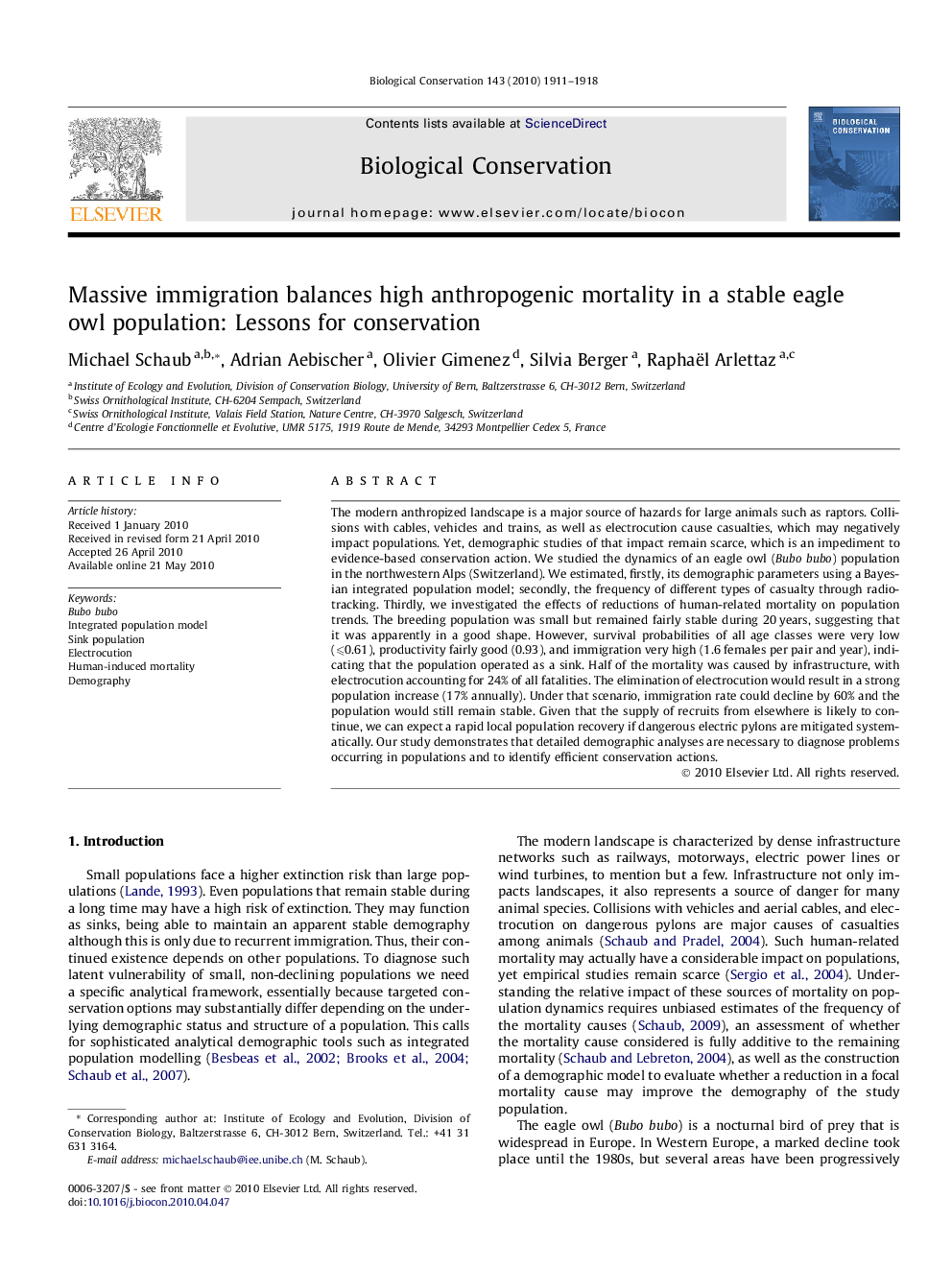| Article ID | Journal | Published Year | Pages | File Type |
|---|---|---|---|---|
| 4386186 | Biological Conservation | 2010 | 8 Pages |
The modern anthropized landscape is a major source of hazards for large animals such as raptors. Collisions with cables, vehicles and trains, as well as electrocution cause casualties, which may negatively impact populations. Yet, demographic studies of that impact remain scarce, which is an impediment to evidence-based conservation action. We studied the dynamics of an eagle owl (Bubo bubo) population in the northwestern Alps (Switzerland). We estimated, firstly, its demographic parameters using a Bayesian integrated population model; secondly, the frequency of different types of casualty through radio-tracking. Thirdly, we investigated the effects of reductions of human-related mortality on population trends. The breeding population was small but remained fairly stable during 20 years, suggesting that it was apparently in a good shape. However, survival probabilities of all age classes were very low (⩽0.61), productivity fairly good (0.93), and immigration very high (1.6 females per pair and year), indicating that the population operated as a sink. Half of the mortality was caused by infrastructure, with electrocution accounting for 24% of all fatalities. The elimination of electrocution would result in a strong population increase (17% annually). Under that scenario, immigration rate could decline by 60% and the population would still remain stable. Given that the supply of recruits from elsewhere is likely to continue, we can expect a rapid local population recovery if dangerous electric pylons are mitigated systematically. Our study demonstrates that detailed demographic analyses are necessary to diagnose problems occurring in populations and to identify efficient conservation actions.
